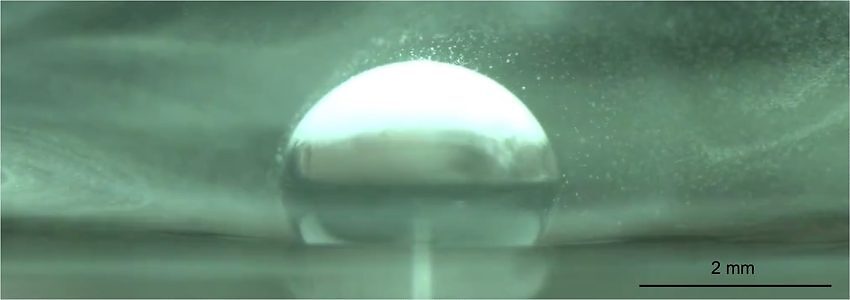Mechanics and Materials Unit (Eliot Fried)
Unit Head: Professor Eliot Fried
Unit Overview
Research in the Mechanics and Materials Unit is focused on the formulation and analysis of mathematical models for novel systems in the mechanical and materials sciences. To derive physically sound models, we rely on the principles of statistical and continuum mechanics and thermodynamics. To extract insight from our models, we use tools from differential and algebraic geometry, asymptotic analysis, bifurcation theory, and scientific computing. We also design and perform experiments to test predictions from, and guide improvements to, our theories.
We interpret the terms `mechanics' and `materials' broadly. Ongoing projects include:
Theory, Design, and Construction of Mechanical Systems
We are using geometry, computer visualization, 3D modeling, and 3D printing to discover and study novel mechanical systems of various kinds, including classical mechanisms, magnetic couplings, and elastic bands and sheets. By progressing from abstract mathematical ideas to design and on to fabricating actual physical object which can be grasped in one's hands, we are seeking to obtain a deeper understanding of each system we consider.
In particular, we are currently investigating mechanisms with few of degrees of freedom made from identical rigid bodies joined by revolute hinges. These systems have many applications including deployable structures, robotics, fluid mixers, kneading machines, underwater propulsion, and educational puzzles. Certain limits of these mechanisms lead to bands with highly anisotropic elastic properties and interesting topologies.
Further, we are designing a magnetic coupling device based on a new principle for the smooth transmission of rotary motion between homogeneously magnetized balls. Specifically, we are now constructing a propulsion system for autonomous underwater vehicles based on this coupling. In a miniaturized form, we will embed this propulsion system into microfluidic devices.
Growth and applications of nanocrystalline diamond films
In addition to growing columnar diamond films by microwave plasma enhanced chemical vapor deposition and studying the mechanical properties of these films, we are working to establish cost-effective technologies for the fabrication of devices that consist of ultra-thin nanocrystalline diamond films and silicon dioxide based glass. Both materials are robust, transparent, and biocompatible and can be made with elements that are available in abundance.
On the device side, we are focused on fabricating ultra-thin diamond windows on glass frames that can be used as highly sensitive microscopic pressure sensors in harsh environments. Recent advances in the technology of ultra-deep glass etching are applied to strongly downsize the diamond windows. The use of a glass substrate allows for the optical characterization of the pressure inducing fluid in the vicinity of the window. We aim to use diamond windows on glass substrates to create novel devices that can be used in fundamental research or for applications. We use laser interferometry to measure the pressure induced deflections of these microscopic windows.
A process for fabricating mesoporous diamond films that are both water resistant and breathable like the well-known Gore-tex fabric is currently under development.
Self-assembly of block copolymers in solution
Motivated by interest in stimuli-responsive colloidal systems, including self-assembled nanoscale particles with novel topologies, we are studying the hierarchical self-assembly of block copolymers in solution as a bottom-up approach to construct decorated microstructures.
Our effort combines theory, mesoscale computational models, and experiment to study how the interplay between thermodynamics and kinetic interactions controls the microphase separation of the block copolymers and gives rise to aggregates with a variety of shapes and topologies. We are investigating the morphogenesis of these aggregates using geometric and thermodynamic descriptors that allow us to postulate general rules for nanoparticle design.
Our main objectives in this effort are to provide a better understanding of the mechanisms that lead to different characteristics and to overcome the prohibitive cost of trial-and-error methodologies. Long term, we are seeking to construct robust models to accelerate the discovery and design of new materials with a broad range of applications, including medical devices, sensors, nanoreactors, and biological prototypes for cells and viruses.
Möbius Kaleidocycle Sculpture
A quick summary of the installation work for the first ever self-moving, meter-scale Möbius Kaleidocycle, inaugurated on April 1st, 2021 at OIST Lab 4.
Acetone droplet in a Leidenfrost state on 75°C water
The movie presents an acetone droplet in a Leidenfrost state on 75°C water surrounded with an aerosol made from water. The movie is 83 times slowed down. The droplet has a diameter of about 2.9 mm. A thermocapillary Marangoni flow is present in the droplet and due to the evaporation of acetone on the water surface, a solutocapillary Marangoni flow is present on the surface of the water.












